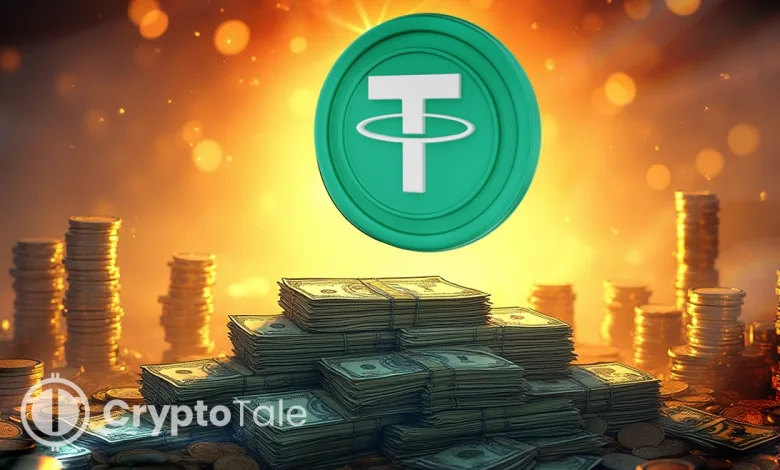Bolivia Stops Crypto Ban as Stablecoins Enter National Banks

- Bolivia adopts regulated stablecoin banking as USDT becomes the first crypto in banks.
- Stablecoin use jumped as inflation rose, boosting remittances and driving payments growth.
- Bolivia’s stablecoin-first rules tighten oversight and open compliant crypto banking.
Bolivia has officially embraced crypto banking, and it begins with USDT under a regulated framework. After nearly a decade of strict prohibition, the Central Bank of Bolivia and the Ministry of Economy opened the legal system to stablecoins for formal financial use. With banks preparing crypto accounts and payment cards, citizens can now transact digitally for remittances and daily spending, faster and without past restrictions.
Ban Lifted as Stablecoins Enter the Banking System
For years, Bolivia blocked all crypto activity and warned citizens about financial stability risks. However, the Central Bank of Bolivia reversed that position and approved regulated digital transactions through authorized electronic platforms.
The decision followed pressure from regional growth and guidance from the Latin American Financial Action Task Force. Bolivia’s economic minister, Jose Gabriel Espinoza, stated that Bolivia will integrate cryptocurrencies directly into the national financial structure. Stablecoins like USDT are expected to lead this shift because their value doesn’t jump up and down.
Banks will soon offer crypto-based savings accounts, payment cards, and loans. Banco Bisa has already started offering stablecoin storage and transfer services. They’re focusing on international payments because crypto makes them cheaper and faster. Customers can now keep and move digital money safely within a regulated bank.
Regional Pressure and Fast Adoption
Bolivia is now joining countries like Brazil, Colombia, and Argentina, which already have regulated crypto systems. This change is driven by strong local demand for quicker digital payments and protection against inflation. Citizens increasingly use stablecoins for remittances and daily transfers.
Bolivia processed $430 million in crypto volume between July 2024 and June 2025. Transaction activity jumped more than 630 percent during this period. The Central Bank reported a twelve times increase in crypto operations through formal financial channels.
Between June 2024 and May 2025, the bank recorded 10,193 digital transactions worth over $88 million. About 86 percent involved individual users instead of businesses. Binance and USDT accounted for most transaction activity across the system.
Officials linked this growth to inflation and currency stress. Bolivia’s national statistics office reported inflation above 22 percent in the year to October. Consequently, citizens turned to stablecoins for everyday savings and cross-border stability.
Stablecoin-First Strategy and Digital Integration
Unlike neighbors exploring full central bank digital currencies, Bolivia adopted a stablecoin-first route. Regulators said this approach offers quicker integration and direct consumer access. Financial institutions must meet strict capital, cybersecurity, and audit requirements.
Banks will facilitate exchanges between digital assets and the boliviano. They will also test blockchain-based services through controlled regulatory sandboxes. Authorities want improved oversight while supporting modern digital payment flows.
Officials linked the strategy to reducing remittance costs for Bolivians working abroad. Therefore, regulated crypto channels provide faster transfers and stronger monitoring. The Ministry of Economy confirmed supervision will remain centralized under the BCB frameworks.
Related: Tether Halts Uruguay Operations Due to Energy Disputes
However, regulators acknowledged limited technical experience within local institutions. Banks must invest in secure custody technology and compliance systems. Meanwhile, authorities will strengthen internal training for crypto crime monitoring.
Bolivia’s reform follows years of foreign currency shortages and rising dollarization. Officials stressed that crypto will not replace sovereign money. Instead, stablecoins will operate as regulated tools within the formal system.
The move also seeks to attract fintech activity into Bolivia’s controlled banking sector. Analysts documented growing interest from blockchain infrastructure firms and payment providers. However, authorities continue to stress financial stability requirements.
Bolivia’s policy transition is one of Latin America’s strongest regulatory reversals. It replaced outright prohibition with structured licensing and supervised access. The change now places stablecoins at the core of Bolivia’s digital finance strategy.
Meanwhile, Bolivia reversed its crypto ban, authorized stablecoins through banks, and reshaped formal financial access nationwide. The government introduced regulated frameworks, required strict oversight, and enabled services through Banco Bisa and licensed institutions. This coordinated approach shows regional alignment, rising adoption data, and controlled stablecoin integration under Central Bank supervision.





